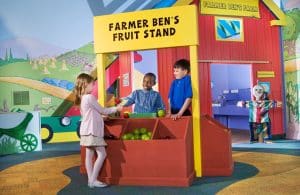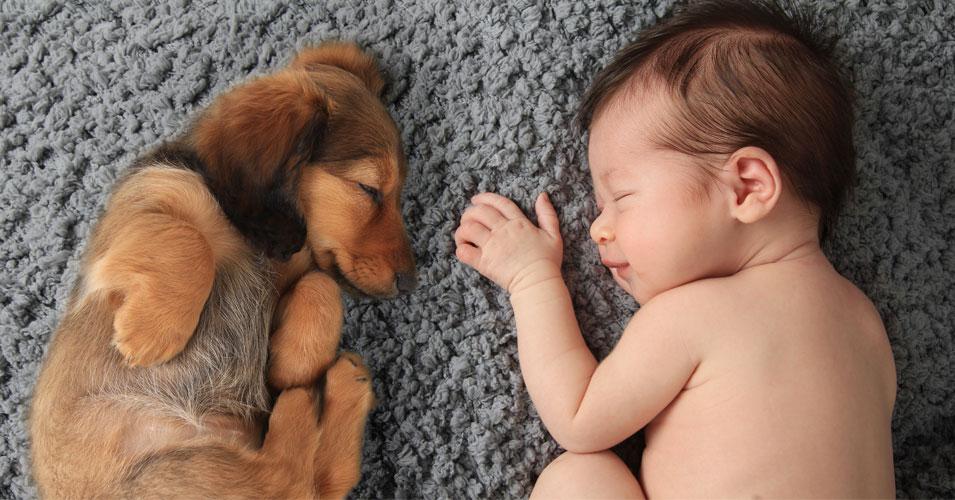If you ever want the attention of a room full of adults, I suggest this sentence: “Getting a puppy is exactly like having a baby.” It’s the battle cry of the childless, usually spoken with the misguided enthusiasm of someone who has gotten a full night’s sleep.
In my younger years, I had the audacity to make this assertion aloud, in the presence of stunned mothers and fathers who were undoubtedly anticipating my eventual day of parental reckoning.
“He’ll get his,” one of them likely whispered to another, envisioning me someday elbow-deep in diapers and mashed bananas, eating my words.
I’m older now, wiser. I’ve helped raise a daughter to the age of 15, sharing every joy and worry along the way. It’s been a challenge, one that many people consider the ultimate test of human existence. Biologically, we are meant to procreate.
But what comes naturally doesn’t always come easily. And over time, I’ve developed a respect for the difference between child rearing and pet training. The costs involved, for instance, are not comparable, and they are measured not just in dollars but also in time, stress and perhaps a bit of sanity.
The parallels are endless, although the more meaningful connection exists at a deeper level, beneath the fur, behind the whiskers, radiating from the childlike eyes that look up at you with unconditional love.
Children require a wealth of specific items and services: backpacks, ear medicine, algebra tutoring, a constant supply of new shoes, lectures about not eating paint. The list is substantial, yet the emotional return on investment is clear: Parenting is one of those rare life experiences from which you truly get back what you put in.
But can’t the same be said of raising a pet? I have never been able to completely discount how caring for an animal can be similar to caring for a child. Although they are not our blood, these creatures fulfill our need for connection and affection in very human ways.
There are the obvious comparisons: the potty training, the drooling, the toppled houseplants, the posted photos of every cute expression, the 2 a.m. crawl into your bed during a thunderstorm. The parallels are endless, although the more meaningful connection exists at a deeper level, beneath the fur, behind the whiskers, radiating from the childlike eyes that look up at you with unconditional love. Well, sometimes hunger, but mostly love.
I grew up in a household that featured a continual rotation of dogs, plus one ornery cat intent on destroying the universe. There were several caged rodents, a bird and one rabbit, although the stench coming from the garage suggested at least three. Animals were a constant presence and source of companionship, setting the stage for the years I spent working as a veterinary technician and the aspiration I had to assemble my own domestic menagerie when the time was right.
Before the birth of my daughter, pet ownership felt like the natural order of progression up the nurturing ladder. It started with Sea-Monkeys, because pouring a bag of crustaceans into an aquarium seemed the baseline of parental responsibility. When those worked out, we moved up to fish. Eventually, we were ready for a puppy, and then another. These were all baby steps, literally—a means of determining if we were capable of raising a child.
Since then, some pets have come and gone. My human child is a teenager. I’m divorced and, when Sadie isn’t at our house, my girlfriend, Mary, and I are outnumbered by the animals. Our yellow Lab, Lulu, is the oldest, the calm child, the well-behaved second-grader who poses curious questions with a tilt of her head and who keeps the backyard squirrel-free. Gibson, our rambunctious 2-year-old orange tabby, is the baby, born with an absurd thirst for window-gazing and an even more absurd number of toes. The middle child is our parakeet, Gidget, squawking for attention when she isn’t flying through the living room amid a trail of blue feathers.
Collectively, these beasts comprise our multispecies family. Like any parents, we cherish each stage of development. We celebrate the small milestones (learning to use the litter box) and the large ones (learning not to eat from the litter box). We love our pets, feed them, care for them, and nurse them back to health when they are injured. We mediate sibling rivalries with a careful mix of scolding and treats. We use the phrase “Stop licking that” way more than any parents should.
Together, we watch these animals grow and mature, witnessing our influence on their character. There’s a sense of mutual reliance: We provide for them, and in return we receive expressions of affection like wagging tails. And we do it all despite the unbearable sorrow we know to expect when they are someday gone.
No, pets are not exactly like children, but they come so close. For some of us, they represent that same unique bond, effectively filling a vacant branch on the family tree: son, daughter, brother, sister, companion. Over time, our pets become exactly what we want them to be, often mimicking the pure love of a child, just with a little more vacuuming.





